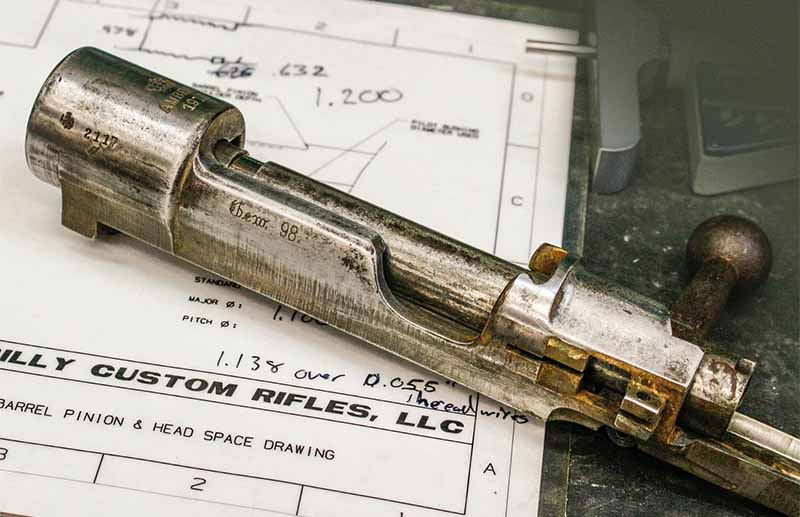When it comes to building your perfect custom rifle, it all starts with your dreams and the action.
When having a custom rifle built, one of the most enjoyable aspects is the blank canvas with which the project begins. I’ve seen all sorts of unique builds, from double rifles built on shotgun actions to pump rifles chambered in cartridges suitable for thick-skinned dangerous game, to drillings in some strange configurations … and rifles built on resurrected actions of a time long ago.
Custom guns can be downright fun. But the most popular—and often the most practical—choices are those classics that are relatively affordable and available. Many of the custom rifles were based on surplus military actions. Much of the WWII-era Springfields, Enfields and Mausers were transformed from the simple (yet obviously effective) military guise into sporting works of art.
With World War II more than 75 years behind us, those rifles are becoming increasingly scarce, and the custom rifle of the last three decades has been, as often as not, built on the Mauser 98 sporting rifle actions, Winchester Model 70s and Remington 700s—and with cause. These are solid designs that are easily worked and can make a rifleman’s dreams come true.
I’ve handled some absolutely amazing custom rifles based on more contemporary actions like the Ed Brown Model 704, the Granite Mountain Arms M98 clone, the CZ550, the Howa 1500 and more. It seems that the controlled-round-feed and push-feed crowds are equally represented in today’s custom rifle world.
I reached out for further insight from a trio of my favorite custom builders, all of which have a stellar reputation, and whose work I greatly admire: Mark Bansner, Todd Ramirez and Dan Rossiter.
Todd Ramirez
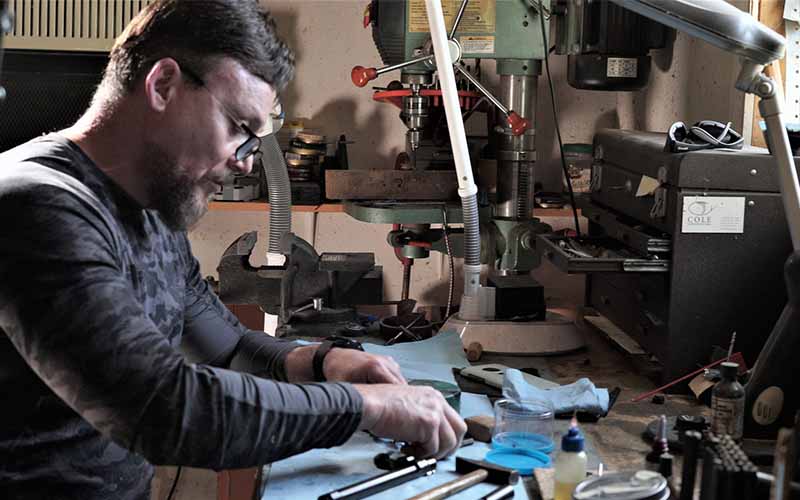
Phil Massaro: What are some of your favorite actions to base your custom rifles on, and what features are you looking for?
Todd Ramirez: My favorite action is the Mauser action—the aftermarket square-bridged actions. It’s very diverse, so you can build a .416 Rigby-length action, all the way down to a .223 Rem. on a mini-Mauser action. The Mauser action has a long, thin action tang, which allows the creation of a perfect grip. The Winchester action, on the other hand, has a wider tang. It’s very wide similar to the Remington-style tang, so your grip is oversized and blocky.
The grip is the heart of the rifle, because all the control is from the grip: the trigger, bolt handle and safety. A gunmaker who builds with a Mauser action has to fine-tune the action and stone out machine marks and other imperfections. Also, being that it’s square-bridged, the mounting system for the scope can be set up centered true to bore. This removes all scope binding.
Of course, on the Winchester 98 action, one can still build the same quality of a rifle. You can square bridge the action, add custom bottom metal and aftermarket triggers, sculpt the tang some and weld on a custom bolt handle. The action still needs to be trued and surface-ground to be square bridged. The Winchester comes out to be more work and money than the Mauser action. That’s why, on my premium rifle builds, I prefer to use a Mauser action. The Winchester is my second choice.
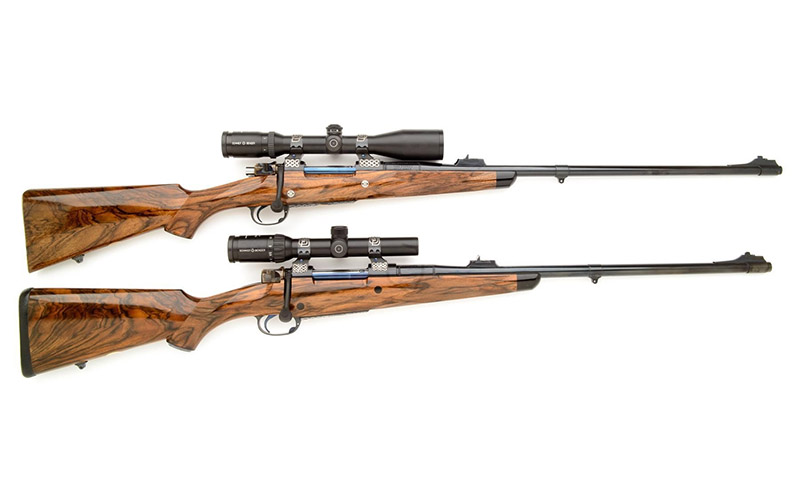
When it comes to Remington, I prefer the aftermarket actions because they’re machined true and have an aftermarket M1-style extractor. Plus, the option of components is endless with the Remington platform. The action is easy to inlet, but it does not lend itself to having a sculpted tang for a more tapered grip. It has a wider tang like the Winchester.
Mark Bansner
As president of Bansner & Company of Adamstown, Pennsylvania, Bansner has a healthy reputation as a custom builder of rifles, from the lightweight mountain guns, to safari rifles to precision target guns. Famous for his synthetic-stocked rifles, Bansner is no stranger to fine walnut nor deep bluing.
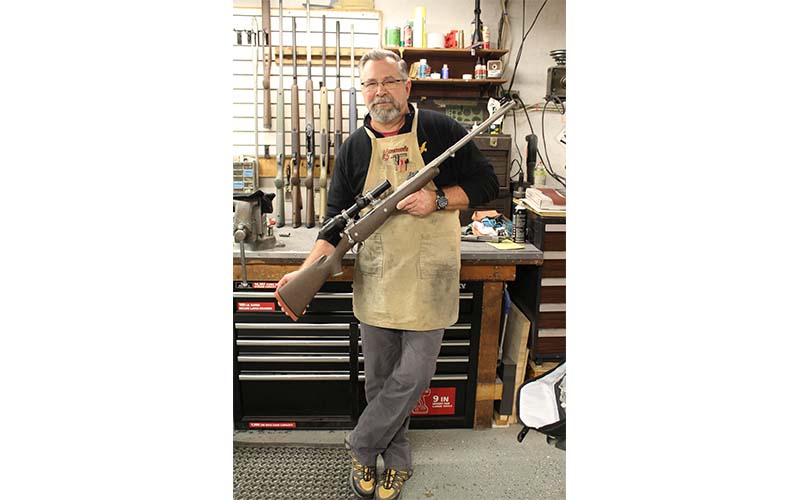
Phil Massaro: Mark, which are your favorite actions to work with?
Mark Bansner: Well, we work exclusively with bolt-actions, and there are three basic categories: the Mauser 98, the Winchester 70 and the Remington 700. All have their clones. For example, the Granite Mountain Arms is a Mauser clone, the Dakota 76 is a Winchester 70 clone and the Defiance is Remington 700 clone—and all have their strengths and weaknesses.
The Mauser is the most complicated to work with, as there are a couple of features that usually need to be changed out to satisfy most customers. The straight-bolt handle will need to be bent to accommodate a low-mounted scope, and the “flag” safety switched for the conventional wing-style safety. Once that’s sorted, you’ve got a great action to work with, and though some may say that a Mauser 98 is sloppy, I’ve made some very accurate rifles with this action. Of course, modern clones like the Granite Mountain Arms come machined to much higher tolerances, but the cost goes up dramatically, and the wait time seems to increase each year.
The Winchester 70 is a great platform—no worries about the safety conformation or bolt handle—and has also been a popular choice, with most customers seeking the controlled-round-feed actions for a custom build. But both of these actions have a square bottom, and that’s where the Remington 700 shines: It’s a round action and can be worked on a lathe.
Is the 700-style action the most popular action in your shop today?
MB: Far and away, the 700 and its offspring are the most popular among my clientele, and that includes the M704, which we love so much. That M704 has a unique controlled-round-feed bolt face, but its essence is a derivative of the Model 700. That said, I can’t begin to tell you how many ½-MOA Mausers and Winchester 70s we’ve built over the years.
If you were building a custom gun for yourself, say, for a special elk or bear hunt, what would you choose as an action?
MB: If I were building a synthetic-stock gun, Cerakoted for weather resistance, I would assuredly reach for the M704, or maybe a Model 700 clone. If I wanted a walnut-stocked rifle, I’d reach for a Winchester Model 70 or a Dakota Model 76. But I have come to love that stylish M704.
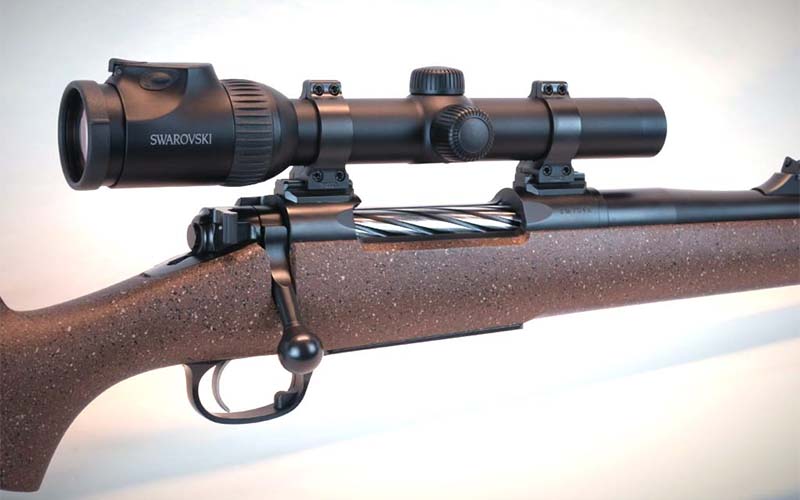
Any experiences with the Ruger No. 1 or other falling-block single shots? I see many custom rifles built on that platform.
MB: I’ve seen some gorgeous custom work based on the Ruger No. 1, but they’re a chore. When they shoot, they shoot wonderfully, but when they don’t … well, there’s the amount of pressure put on the barrel by the forend, the rubber bushings needed to adjust it, and a bunch of stuff that, as a gunsmith, just doesn’t appeal to me. I know the engravers love them, but the platform isn’t for me as a builder.
For the customer looking to get into a custom gun for the least amount of money, is the 700 family the way to go?
MB: Absolutely. There are a good number of 700 clone actions available at an affordable price and, with minimal work, can be made into one helluva rifle. If you can seat that barreled action properly into a decent stock, the results will be eye-opening.
Dan Rossiter
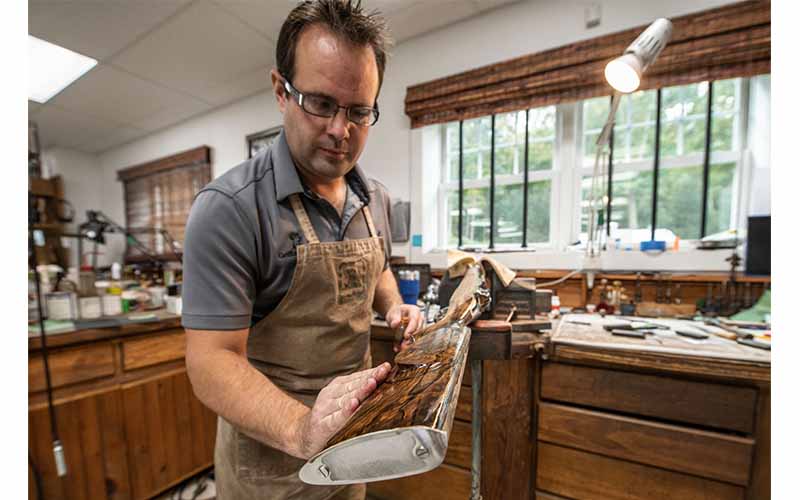
Dan Rossiter is the shop foreman at the prestigious Griffin & Howe, and a member of the American Custom Gunmakers Guild. Working with the firm that is renowned for its custom rifles—G&H built the .30-06 that Ernest Hemingway made famous in his Green Hills of Africa—Rossiter has developed some well-founded opinions on the basis for a custom rifle.
Dan Rossiter: We build three different lines of hunting rifles at G&H, two of which need to achieve ½-MOA three-shot groups with factory match ammunition or we don’t let them out the door.
I’ve worked with two precision action manufacturers: American Rifle Company and Defiance. G&H bases our wood-stocked “All American” rifle on American Rifle Company’s Mausingfield Action. This action is a controlled-round feed, with a Springfield-type inertia ejector and a Remington footprint. We barrel the All American with a Proof Research carbon-fiber barrel. The precision to which both the action and the rifle is built shows up down range in a very real way.
The other action G&H uses is made specifically for G&H by Defiance. These are a controlled-round feed, with three-position safeties and TriggerTech triggers. We build a lightweight synthetic-stocked rifle—the Highlander—with these actions.
Going Your Own Way
The Classics: G&H’s reputation was built on taking military rifles such as the 1903 Springfield and Mauser 98 and turning them into functional works of art, and the company still builds the “classic sporter,” as do other custom builders.
FN Mauser: If I’m building a classic bolt action for a cartridge that’s the same overall length as the .30-06 or .300 Win. Mag. families, I’m looking for an FN commercial Mauser action. These actions were very nicely made and typically sport better tolerances than their military counterparts. With the investment in some bottom metal and a three-position safety, you will have the basis for a wonderful custom rifle. Just find a gunmaker worthy of the task.
Winchester Model 70: If you’re into the whole classic British magnum thing, then find yourself a Winchester Model 70. Modifying a standard Model 70 for a .300 H&H or a .375 H&H is a straightforward affair. These actions already have a great three-position safety and, although custom bottom metal is an upgrade, the factory offering looks good and works just fine. These actions can actually save money if used for a custom build when compared to commercial FN Mauser.
1903 Springfield: These actions can make a beautiful custom rifle. Make sure the heat treat is good (many serial number references exist for this), and keep the cartridges to the .30-06 family. Three position safeties are available, as are custom bottom metal.
Granite Mountain Arms and Satterlee: Consider the classic Mauser double-square-bridge action in four different lengths to suit just about any cartridge designed for a bolt-action rifle. These GMA actions are wonderfully machined, and they are ready straight from the maker. They sport three-position safeties, a great bottom metal, excellent triggers and will feed all the major families of cartridges right out of the box. Satterlee Arms deserves a mention here as well: They don’t come in as many lengths as GMA, but they do come in titanium. Like GMA, these are precision-machined, double-square-bridge Mauser actions.
Falling-Block Single Shot: Steve Earle of Steve Earle Products makes one of the finest single-shot falling block-actions in the world. It’s a reproduction of the Daniel Fraser falling-block action and is so well machined it boggles the mind. It’s also immensely strong, absolutely beautiful and wonderfully elegant in its handling qualities when properly barreled and stocked. I strongly recommend contacting Glenn Fewless of Mook Machine Works, who makes a barrel specifically for these actions, with a full-length integral rib.
Building ‘The One’
There are a great number of gunsmiths willing to build you a rifle on any platform you could feasibly imagine, so long as you’re patient enough to meet their time table and have a checkbook that can cover the costs of the endeavor.
However, there are the logical choices that can check the boxes with a minimal investment and still give the satisfactory experience of the custom rifle. Whether the platform is a Remington 700, Winchester 70, Savage 99, Ruger M77, K98 Mauser or CZ550—and though sadly discontinued, there were a lot of great big-bore rifles built on that platform—there’s no wrong or right answer when it comes to your custom rifle. The single requirement is that you, the owner/shooter, enjoys the rifle, irrespective of the opinions of others.
Sources: Todd Ramirez: CustomGun.com ; Mark Bansner: BansnerAndCompany.com ; Dan Rossiter: GriffinHowe.com
Editor’s Note: This article originally appeared in the June 2022 issue of Gun Digest the Magazine.
More Custom Rifle Stuff:
 NEXT STEP: Download Your Free Storm Tactical Printable Target Pack
NEXT STEP: Download Your Free Storm Tactical Printable Target Pack
62 Printable MOA Targets with DOT Drills – Rifle Range in YARDS This impressive target pack from our friends at Storm Tactical contains 62 printable targets for rifle and handgun range use. Target grids and bullseye sizes are in MOA. Ideal for long-range shooting!
Subscribe to the Gun Digest email newsletter and we’ll send your print-at-home target pack right away. Just enter your email address below.
